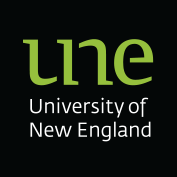Sometimes it only takes a word or two of encouragement to make a big difference. That was the case for UNE History student, Joanna Auerbach, when feedback on a Masters-level essay on Public History suggested she share her work more widely. The result – Joanna’s first published paper, in a prestigious international journal.
Casual History lecturer Peter Woodley remembered Joanna’s essay well, and when she contacted him about his feedback he was able to point the way forward. “She was keen to pursue a publication”, Peter recalls, “but really had no idea how to get started”.
“The original essay was not quite in the form of a conventional journal article”, according to Dr Woodley, “but more like reflections on public history through the lens of deeply personal experience, having visited to Auschwitz in Poland. But I think that was its strength. It had something important to say”.
Peter – himself developing a number of published pieces – recommended a number of journals and suggested Joanna ask her industry contacts (in the museum sector) which ones they found most useful in their work.

Joanna Auerbach
Fast-forward twelve months, and Joanna’s essay is now revised as a peer-reviewed article, accepted for publication in The Public Historian (University of California Press), a journal dedicated to scholarly research and case studies that address substantive and theoretical issues in the field of Public History.
Joanna says she is grateful to Peter for putting the idea into my mind, and was further encouraged when The Public Historian showed interest.
“I confess though, that the experience of peer review was an extremely daunting one – with detailed commentary, multiple rounds of edits, and no real idea of what would come of it. I was both thrilled and relieved when I got final notice that my paper would be published, and I’ll admit I now feel rather proud!”
The Public Historian is currently ranked Q2 by Scimago, and has an international reputation for research in local history, historic preservation, oral history, museum studies and digital heritage, areas which are also strengths of UNE’s History program. The unit HIST556, which Joanna studied in 2022 as part of the Masters of History, is designed to open students to the possibility of careers in public history. She pursued her research into Holocaust memory further in UNE’s with UNE’s specialist in Oral History, Dr Lorina Barker.
Joanna’s success also gratifies a major push in the UNE’s discipline of History to nurture independent student research as a core component of its teaching program.
Associate Professor David Roberts articulates the agenda as “creating a research-active curriculum”. He describes that as a potential way forward for Humanities disciplines that are under pressure to remain competitive in an era of ‘standards’ and work readiness.
“We’re building student research training into our teaching at various levels in our curricula, from the threshold to the capstone, and often extending to the sort of personal mentoring that Peter has employed in Joanna’s case”, Roberts says. “For us it’s about having students understand themselves as problem solvers and producers of originalknowledge. Those are skills they can pitch to employers in and beyond the history industries”.
The Convenor of History at UNE, Associate Professor Richard Scully, is helping drive the initiative. “It’s about bringing teaching and research into a more meaningful alignment, and giving students a special investment in their learning”, he says. “Instead of passive learning, we get students actively engaged with the practices of our discipline. And of course, they love the research as much as we do!”.
Joanna Auerbach’s article on “Reflections on the Meaning and Experience of Holocaust Tourism’ will appear in the February 2024 volume of The Public Historian. A second article based on her research on ‘Intergenerational Conversation’ is expected to be published by the Sydney Jewish Museum.
Image: Lopuchowo Forest in Poland, the site of the massacre of Tykocin’s Jews in 1941.



Recent Comments